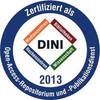In: Wagner, Wolfgang (Hrsg.): 100 years ISPRS advancing remote sensing science : ISPRS Technical Commission VII symposium; 1910 - 2010 centenary celebration Vienna; Vienna, Austria, July 5 - 7, 2010 : Pt. B Papers accepted on the basis of peer-reviewed abstracts. Lemmer, GITC 2010, pp. 287-292 (International archives of photogrammetry, remote sensing and spatial information sciences ; 38/7B)
Preview |
PDF, English
- main document
Download (6MB) | Terms of use |
Abstract
As an active remote sensing technique airborne laser scanning (ALS) is able to capture the topography with high precision even for densely forested areas. Due to the high pulse repetition frequency of up to 400 kHz a high sampling rate on the ground can be achieved, which allows the description of the terrain surface in decimeter scale. In this contribution two approaches to characterize terrain roughness are described. In the first approach the standard deviation of detrended terrain points is calculated. To achieve a high spatial resolution of the derived roughness layer a high terrain point density is essential, which requires especially in dense forested areas a very high sampling rate. In addition to the 3D position of backscattering objects, full-waveform ALS systems provide the width of each detectable echo, which provides information on the range distribution of scatterers within the laser footprint that contribute to one echo. It is therefore, an indicator for surface roughness and the slope of the target. In comparison to the roughness layer derived from the first approach using high point densities, the derived echo width image shows similar spatial patterns of terrain roughness even for moderate point densities. The results show that both the echo widths and the vertical distribution of terrain echoes are useful to derive reliable geometric terrain roughness layers of large areas.
| Document type: | Book Section |
|---|---|
| Editor: | Wagner, Wolfgang |
| Title of Book: | 100 years ISPRS advancing remote sensing science : ISPRS Technical Commission VII symposium; 1910 - 2010 centenary celebration Vienna; Vienna, Austria, July 5 - 7, 2010 : Pt. B Papers accepted on the basis of peer-reviewed abstracts |
| Series Name: | International archives of photogrammetry, remote sensing and spatial information sciences |
| Volume: | 38/7B |
| Publisher: | GITC |
| Place of Publication: | Lemmer |
| Date Deposited: | 30 Jul 2025 07:43 |
| Date: | 2010 |
| Page Range: | pp. 287-292 |
| Faculties / Institutes: | Fakultät für Chemie und Geowissenschaften > Institute of Geography |
| DDC-classification: | 550 Earth sciences |
| Uncontrolled Keywords: | Three-dimensional, LIDAR, Surface, DEM/DTM, Retrieval, Geomorphology, Roughness |









